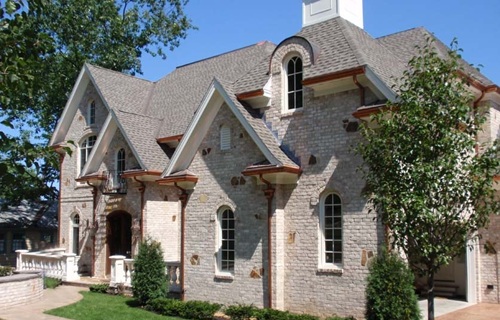As property owners search for cost-effective and sustainable roofing solutions, silicone roof coatings have gained attention for their ability to extend roof life, improve energy efficiency, and simplify maintenance. Made from a silicone-based compound, these coatings form a seamless, waterproof layer over existing roofing materials. They are widely used on flat or low-slope roofs, especially in commercial and industrial settings, but are becoming more popular in residential applications as well.
However, while silicone roof coatings offer many benefits, they also come with a set of limitations that homeowners and building managers should understand. In this article, we explore the pros and cons of silicone roof coatings to help you make an informed roofing decision.
What Is a Silicone Roof Coating?
![]()
Silicone roof coating is a liquid-applied roofing membrane made from 100% silicone or a silicone blend. Once applied, it cures to form a flexible, rubber-like film that adheres to most existing roofing systems. It’s often used as part of a roof restoration system, meaning it can be applied over aging but structurally sound roofs to restore performance without the cost of full replacement.
Commonly used substrates include:
- Built-up roofing (BUR)
- Modified bitumen
- TPO
- EPDM
- Metal
- Spray foam roofing systems
Pros of Silicone Roof Coating
1. Excellent Waterproofing Capabilities
Silicone roof coatings are highly effective at sealing roofs and preventing water penetration. Once cured, the coating creates a seamless membrane that resists ponding water, making it ideal for flat roofs where drainage can be a challenge.
2. UV and Weather Resistance
Silicone naturally resists ultraviolet (UV) radiation and weathering. Unlike other coatings that degrade under sun exposure, silicone maintains its integrity for years, making it well-suited for hot, sunny climates and areas with extreme weather fluctuations.
3. Energy Efficiency
Most silicone coatings are white or light-colored, which helps reflect sunlight and reduce heat absorption. This cool roofing effect can lower indoor temperatures and reduce air conditioning costs, especially in commercial buildings with large roof surfaces.
4. Environmentally Friendly Option
Applying a silicone coating is considered a sustainable roofing solution because it extends the life of the existing roof, reducing the need for tear-offs and landfill waste. Many formulations are also low in volatile organic compounds (VOCs), contributing to better indoor air quality.
5. Cost-Effective Roof Restoration
Compared to a full roof replacement, silicone coating systems are significantly more affordable. They also require less labor, minimal disruption to building operations, and offer quick application times, making them attractive for budget-conscious property owners.
6. Low Maintenance Requirements
Silicone coatings are resistant to mold, mildew, dirt, and staining, meaning they require minimal upkeep. Periodic inspections and basic cleaning are usually enough to maintain performance over time.
7. Flexible and Crack-Resistant
Silicone coatings remain flexible even in cold temperatures, allowing them to expand and contract with roof movement. This elasticity helps prevent cracks and splits, enhancing the roof’s durability under thermal stress.
Cons of Silicone Roof Coating
1. High Initial Material Cost
Although cost-effective over the long term, silicone coatings are typically more expensive per gallon than other coating types such as acrylic or asphalt emulsions. The upfront material cost can be a barrier, especially for large roofing projects.
2. Slippery When Wet
One of the most cited drawbacks is that silicone surfaces become extremely slippery when wet, posing a safety hazard for workers or maintenance personnel. Additional measures like walk pads or traction-enhancing topcoats may be necessary for safe access.
3. Limited Color Options
Most silicone roof coatings come in white, gray, or light colors. If aesthetics or design preferences call for a wider palette, other materials may offer more flexibility in color customization.
4. Difficult to Recoat With Other Materials
Once a roof is coated with silicone, applying another type of coating on top (such as acrylic or urethane) is challenging due to adhesion issues. Future recoating typically requires another layer of silicone, limiting material flexibility.
5. Dirt Accumulation and Reduced Reflectivity
Over time, silicone coatings tend to attract and retain dirt and dust, which can diminish their reflective properties and reduce energy efficiency unless they are cleaned regularly. This might affect long-term cooling benefits in hot climates.
6. Requires Proper Surface Preparation
For optimal adhesion, the existing roof surface must be clean, dry, and in good structural condition. Silicone does not adhere well to moist or oily surfaces, so improper preparation can lead to premature failure or delamination of the coating.
7. Not a Fix for Structurally Damaged Roofs
Silicone coatings are designed for restoration, not reconstruction. If a roof has severe structural damage, significant water infiltration, or rotted decking, a coating will not solve those issues and could potentially mask more serious problems.
Tips for Successful Silicone Roof Coating Application
- Inspect the roof thoroughly before coating to ensure it’s structurally sound.
- Pressure-wash and repair cracks, blisters, or loose seams before application.
- Choose high-quality silicone products from reputable manufacturers.
- Apply at the recommended thickness (usually 1.5 to 2.5 gallons per 100 sq. ft.) to ensure adequate coverage and protection.
- Hire a professional roofing contractor for best results, especially on commercial projects.
Is Silicone Roof Coating Right for You?
Silicone roof coatings are ideal for:
- Flat or low-slope roofs with ponding issues
- Aging but structurally sound commercial roofs
- Building owners looking for energy savings and environmental benefits
- Facilities seeking a non-disruptive, cost-effective roofing solution
However, they may not be suitable if:
- The roof requires full structural repair
- Budget constraints prohibit high material costs
- A colored or decorative roof finish is desired
Conclusion
Silicone roof coatings are a durable, efficient, and environmentally friendly solution for extending the life of your roof. With their superior waterproofing, UV resistance, and energy-saving potential, they offer numerous benefits for both residential and commercial buildings. However, potential users should also be aware of the higher material costs, slipperiness, and limited recoat options associated with silicone.
Ultimately, if your roof is a good candidate for restoration and you’re seeking long-term protection with minimal maintenance, a silicone roof coating may be a smart investment that pays off in durability and energy savings.


